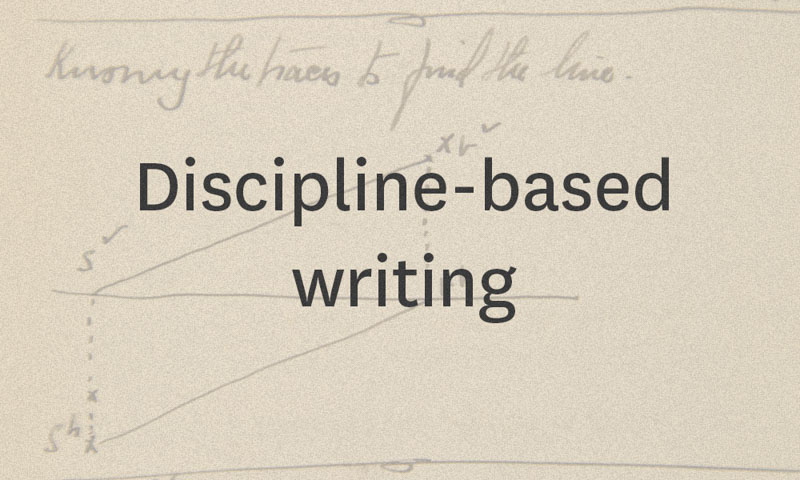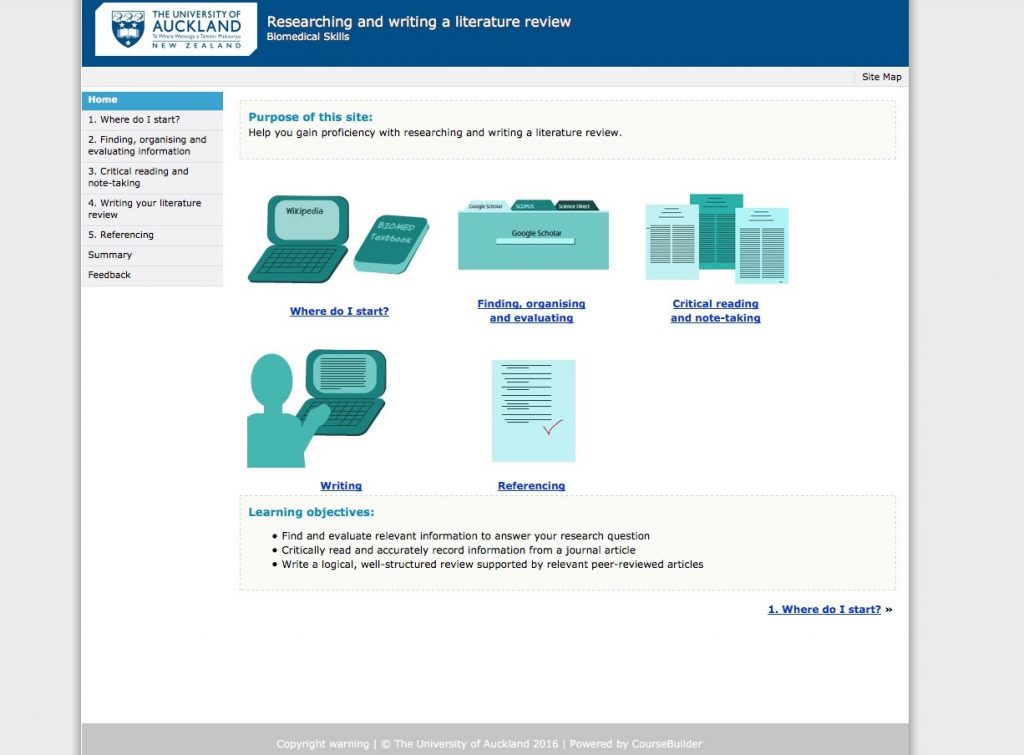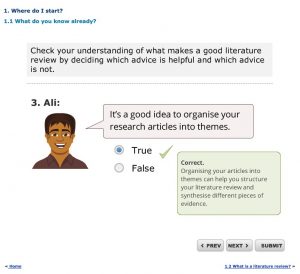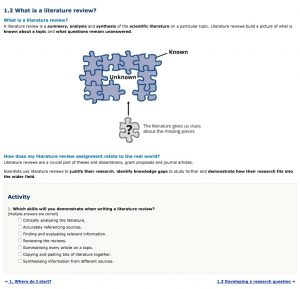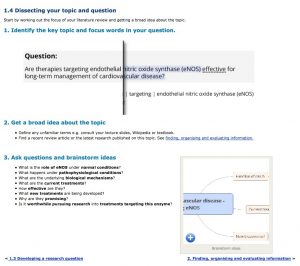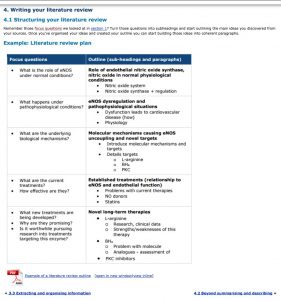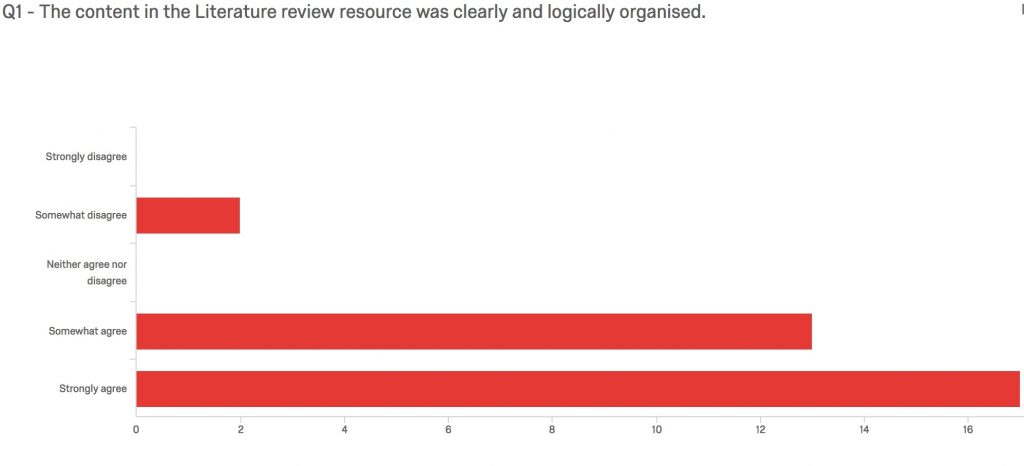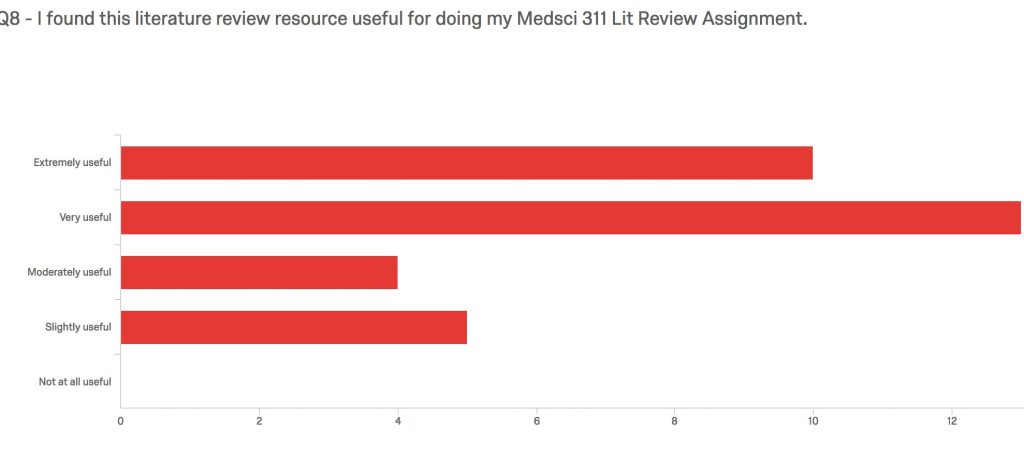A project designed to help students write their first literature review
This project’s resources were originally developed for third year students taking the paper MEDSCI 311: Cardiovascular Biology at the University of Auckland, by Anuj Bhargava from the Faculty of Medicine and Health Sciences.
These resources might be useful to: teachers of medical and health sciences, teachers of STEM subjects as well as teachers helping students to prepare their first literature review.
Watch Anuj presenting his project at the 2017 CLeaR Teaching and Learning Symposium.
An interview with 2017 CLeaR Fellow Anuj Bhargava can be found here.
For similar projects, see: Student Writing Textbank and Narrative Medicine and Critical Reflection Through Poetry and Art.
Project background
Anuj Bhargava started his CLeaR Fellowship Programme with following key objectives:
- To develop the literature review writing web tool to provide self-directed guidance to a cohort of stage III cardiovascular biology students.
- To have the webtool evaluated by academic staff members and peers as well as the cohort of stage III students to gauge its usefulness.
As Anuj explains: “Conceptual understanding in Year 2 requires higher level cognitive skills than at Year 1 and assessments target higher level cognitive and psychomotor skills (Bloom & Krathwohl, 1956). Accordingly, students who have not mastered the higher-level skills in the taxonomy of learning tend to struggle with the transition, and show deficits in areas such as report writing skills, analytical skills and presentation skills. One of the challenges in science education is to move students from thinking about science as a collection of facts to be memorized toward a deeper understanding of concepts and scientific ways of thinking. Another significant teaching challenge is to convey the concept of scientific work as a cooperative venture.
A particularly important area that has been identified by University of Auckland teaching staff as a struggle for students to upgrade their skills in literature review. My CLeaR fellowship project was to address some of these gaps by developing self -help online tools that will enable students to “catch up” with the stage II and III requirements in order for better outcomes in students who would otherwise be at risk. Potential employers expect graduates to be able to communicate effectively with both professional and non-professional audiences on science related matters.
The literature review web tool project was centred around a stage III course, Medsci 311: Cardiovascular Biology (Semester 1; 72 students). The enrolled students are required to write a literature review on a “current hot cardiovascular” topic which is worth 10% of their final grade.”
Below are some screenshots from the webpage:
Reference
Bloom, B. S. and Krathwohl, D. R. (1956) Taxonomy of Educational Objectives: The classification of educational goals. Handbook I: Cognitive Domain. New York: Longmans.
Project reflection
Project Development Process
Paper prototype (based on student emails) and draft web tool was developed with help from Library and Learning Services. The draft of the webtool was peer reviewed by academic colleagues and postgraduate students. A further feedback was obtained from a cohort of former and current stage II and III students based at Grafton campus after which relevant animations and self-assessment activities were added to the site.
Formal implementation of the webtool was done in semester I 2017. This was followed by two Canvas conferences to reinforce the literature review principles. Formal feedback was obtained later in the semester once the students had time to reflect and review the tool.
Evaluation
The 2017 cohort of Medsci 311 students were requested to complete a 11-item survey adapted from the UoA eLearning questionnaire with open text comments. 45% (32/71) students participated in the questionnaire.
Results
Figure 1.
Figure 2.
Selected feedback:
Another output of the project was Anuj Bhargava’s ‘Online skills hub: Blending the best of both worlds’ which was presented as a poster in the IUPS & ADInstruments Teaching Workshop 2017, Armacao de Buzios – Rio de Janiero for which it was rewarded a Certificate of Distinction.
